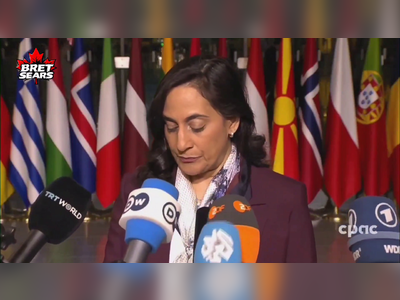Brussels Airport Implements New Border Control Measures Amid Security Concerns
The updated security protocols aim to enhance passenger safety and streamline travel processes.
Brussels Airport has announced the implementation of new border control measures designed to enhance security and improve the passenger experience.
These changes come in response to growing concerns over safety in airports across Europe, particularly following several incidents that have raised awareness about the effectiveness of current security protocols.
The new measures will involve increased checks at immigration points, where passengers traveling to and from non-Schengen countries will face additional scrutiny.
This enhanced security approach includes the use of advanced technology to better identify potential threats and improve the accuracy of passenger verifications.
In conjunction with these changes, the airport management has emphasized the need for cooperation among European Union countries to ensure seamless travel while maintaining rigorous security standards.
Brussels Airport aims to strike a balance between effective border management and the facilitation of passenger flows, particularly as travel demands have surged following the easing of COVID-19 restrictions.
The airport's administration has indicated that these upgrades are part of a broader initiative to modernize its infrastructure and adapt to new security challenges.
As international travel continues to grow, the aim is to maintain high levels of public safety while avoiding long wait times and bottlenecks that can impact the overall travel experience.
Airlines operating at Brussels Airport have expressed their support for the new measures, highlighting the importance of security in fostering passenger confidence.
Stakeholders from the aviation industry are collaborating with Brussels Airport to ensure that flight schedules remain largely unaffected while these new protocols are implemented.
This move aligns with similar initiatives across other major European airports, where the urgency to enhance airport security continues to shape operational strategies in the face of evolving threats.
The impact of these measures on travel patterns and passenger satisfaction will be closely monitored as the changes take effect.
These changes come in response to growing concerns over safety in airports across Europe, particularly following several incidents that have raised awareness about the effectiveness of current security protocols.
The new measures will involve increased checks at immigration points, where passengers traveling to and from non-Schengen countries will face additional scrutiny.
This enhanced security approach includes the use of advanced technology to better identify potential threats and improve the accuracy of passenger verifications.
In conjunction with these changes, the airport management has emphasized the need for cooperation among European Union countries to ensure seamless travel while maintaining rigorous security standards.
Brussels Airport aims to strike a balance between effective border management and the facilitation of passenger flows, particularly as travel demands have surged following the easing of COVID-19 restrictions.
The airport's administration has indicated that these upgrades are part of a broader initiative to modernize its infrastructure and adapt to new security challenges.
As international travel continues to grow, the aim is to maintain high levels of public safety while avoiding long wait times and bottlenecks that can impact the overall travel experience.
Airlines operating at Brussels Airport have expressed their support for the new measures, highlighting the importance of security in fostering passenger confidence.
Stakeholders from the aviation industry are collaborating with Brussels Airport to ensure that flight schedules remain largely unaffected while these new protocols are implemented.
This move aligns with similar initiatives across other major European airports, where the urgency to enhance airport security continues to shape operational strategies in the face of evolving threats.
The impact of these measures on travel patterns and passenger satisfaction will be closely monitored as the changes take effect.
AI Disclaimer: An advanced artificial intelligence (AI) system generated the content of this page on its own. This innovative technology conducts extensive research from a variety of reliable sources, performs rigorous fact-checking and verification, cleans up and balances biased or manipulated content, and presents a minimal factual summary that is just enough yet essential for you to function as an informed and educated citizen. Please keep in mind, however, that this system is an evolving technology, and as a result, the article may contain accidental inaccuracies or errors. We urge you to help us improve our site by reporting any inaccuracies you find using the "Contact Us" link at the bottom of this page. Your helpful feedback helps us improve our system and deliver more precise content. When you find an article of interest here, please look for the full and extensive coverage of this topic in traditional news sources, as they are written by professional journalists that we try to support, not replace. We appreciate your understanding and assistance.










